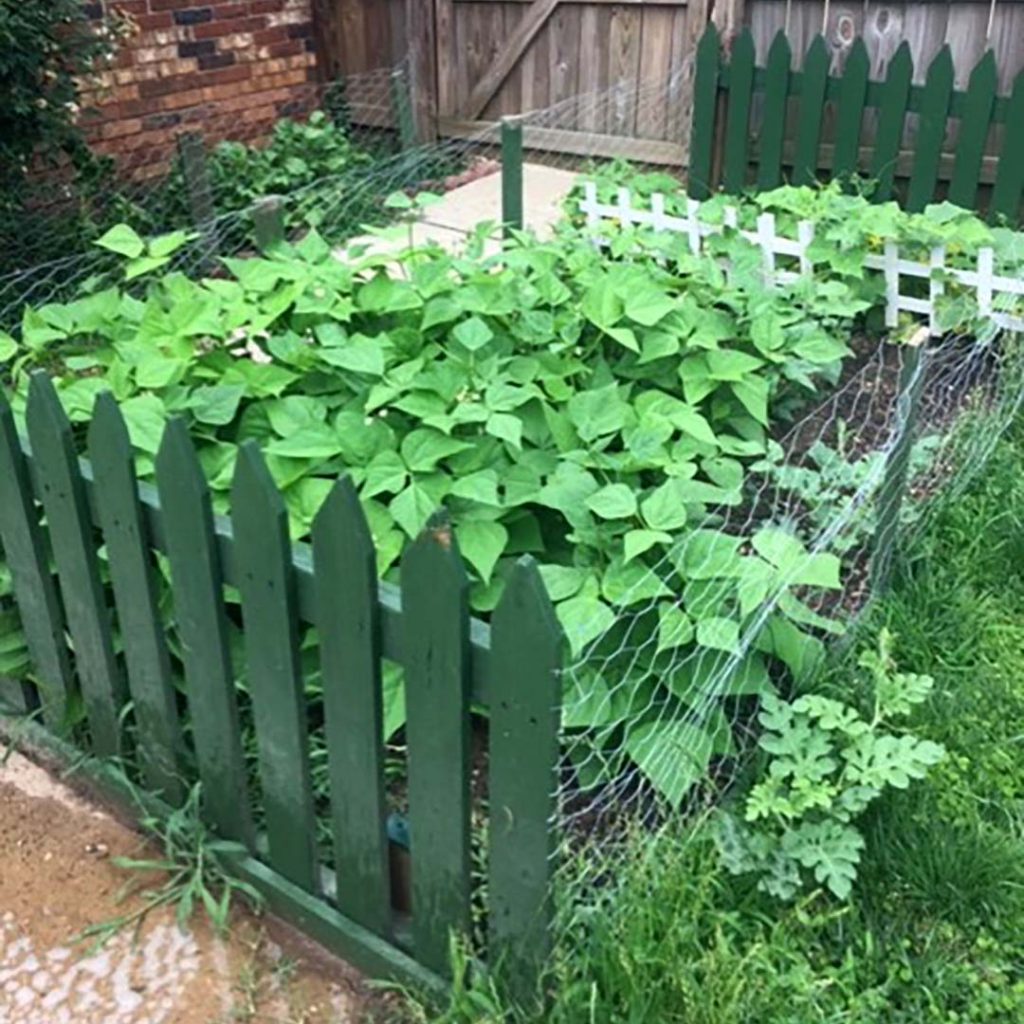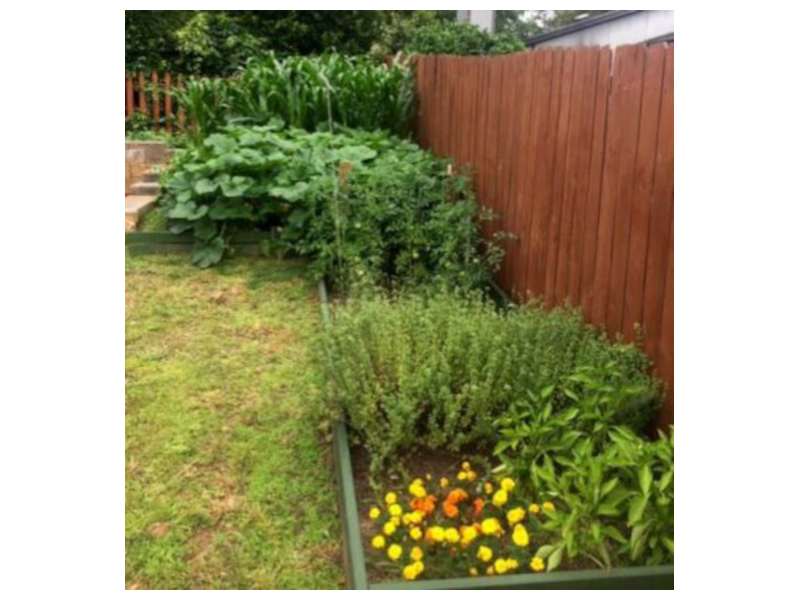Planting a vegetable garden is far easier than it may seem. While it can be somewhat time-consuming, it is well worth planting your own garden. For those that want good home-grown produce to ripen in the summer, now is the time to begin.
The first thing to do is to select a spot that gets plenty of sunlight all day. If you have a dog or dogs, it is best to find a corner fenced area as you will need to build a makeshift chicken wire barricade to keep the pets out.
Once the desired spot is found, then make a diagram on paper of what you want to plant and where. Keep in mind that cucumbers, watermelon, pumpkin and squash are all vine plants that need plenty of area to sprawl. You can put up lattice in the area where you plant cucumbers and the vines will grow upward leaving the cucumbers dangling for easy picking.
Other plants such as okra and tomatoes grow straight up, while beans and peas do a little of both. By planning strategically, you run less of a risk of one type of plant overrunning the others.
[adrotate banner=”19″]
Root vegetables such as carrots and potatoes take up less real estate and will even grow between some of your vine vegetables.
Always plan to plant corn at the western end of the garden. Corn naturally grows tall, so you do not want it taking up all the sunlight and casting shade on other, smaller plants.
Once you have the schematics down, go ahead and plow the area over,removing any rocks you find. Spread fertilizer thinly across the entire area and repeat the process of tilling. If the ground is even somewhat sandy, you may want to add potting soil; however, I recommend just plain-Jane potting soil, not the kind with additives such as Miracle Grow. You want the best possible ph for the soil, so be conservative with the fertilizer.
If you have any questions about the ph balance in the soil, you can always give a sample to your county extension agent for testing, and they can offer recommendations in terms of how much fertilizer you need to spread.
The biggest reason to plow early is to prepare the ground and allow an ecosystem to develop as leftover plant material from plowing will attract needed and beneficial insects. I always buy several cartons of earthworms and toss them out into the prepared garden. That was a tip from my grandfather. The worms break down the plant material and turn it into nutrients for your plants. You can also just go out into the garden and retrieve some of the worms to go fishing!
[adrotate banner=”31″]
For a normal garden, a 15-foot area with about 12 rows is sufficient unless you are growing corn. In that case, you need to basically double the area.
The soil should be plowed a minimum of three times and fertilizer spread twice before you use a hoe to create your rows. Also, make sure there is plenty of drainage between the rows so that the April rains will not puddle up or wash your seeds away.
Make sure, too, that you have plenty of room to walk between the rows to weed and eventually pick your crop.
For those intending to box in the garden (which is recommended), drill holes in the lumber. This allows for drainage, but it prevents soil erosion.
The best time to plant your seeds is the week of Good Friday unless the week prior is nice and sunny. The exception is tomatoes. If you want to grow tomatoes from seed, you can get started now.

To begin your tomatoes, place soil in small SOLO cups with a seepage hole cut in the bottom. Plant the seeds in the cups and place them on a baking sheet near a window with good sunlight. It will take several weeks for the seeds to germinate, but they will be ready to go when you sow your other seeds.
Out of all your plants, tomatoes are the slowest growing. An easier alternative is to buy tomato plants from your local nursery, especially if you do not have a good, sunny area indoors to germinate seeds. Remember to have metal cages on hand as your tomatoes grow, or you can use spikes and twine to reign them in.
In terms of seeds, the highest quality you will find are at your local feed and seed retailer as opposed to the seeds sold in big box stores. Locally, North Augusta Feed and Seed on Georgia Avenue, Country Boy Feed and Seed on Ascauga Lake Road in North Augusta, Daniel’s Feed and Seed on Old Savannah Road in Augusta, Barnharts Feed and Seed on Highway 88 in Hephzibah and Down on the Farm on Washington Road in Evans are all great locally owned businesses that carry the best in seeds (leave a comment below if I missed anyone).
Once you are ready to sow, conventional wisdom is to leave plenty of space between the seeds. I, however, plant seeds close because you never know which seeds will germinate. It, to me, is better to cull the seedlings rather than have a bare spot in the middle of the garden.
As you sow, you might also think ahead about attracting bees and other pollinators. Marigolds are great to have in your garden as they not only attract pollinators, but the repel pests as well. If you have the room, consider planting sunflowers, not only do they attract bees, but you get the seeds from them as well which can be eaten or pressed for oil.
Keep plenty of hummingbird feeders around, not only are the birds fun to watch, they are amazing pollinators.
[adrotate banner=”23″]
As your plants begin to grow avoid any spray-on pesticide. Sevin Dust is a powder that can be applied to all plants without worry of the chemicals chasing away your pollinators.
From day one after you sow, keep a sharp eye on the weather so that you don’t let your garden go three or more days without water. However, don’t water when you expect rain as rainwater contains nutrients that are leached out of tap water. It is also a good idea to have extra buckets on hand to capture rainwater for use during a dry spell. If you do collect rainwater, though, make sure you cover the bucket when it is not raining or you will develop a mosquito problem for yourself and your neighbors.
The best plants to have in your garden for our area are tomatoes, all varieties of squash, okra, corn, black eyed peas, green beans, cabbage, carrots, cauliflower, broccoli, cucumbers, watermelon, pumpkin, peppers of all varieties, garlic, honey dew, cantaloupe, potatoes, onion and tomatoes.
The regional climate is also great for herbs such as cilantro, rosemary, oregano, dill, mint, coriander and chives. Indeed, your oregano and rosemary will grow year round outdoors while others, if they are potted, can be brought indoors during winter so they last year round.
Another great resource is the FaceBook page “Hobby Farmers Of The CSRA,” where there are gardeners always willing to give advice to newbies.
Happy farming!
Scott Hudson is the Managing Editor of The Augusta Press. Reach him at scott@theaugustapress.com
[adrotate banner=”50″]













